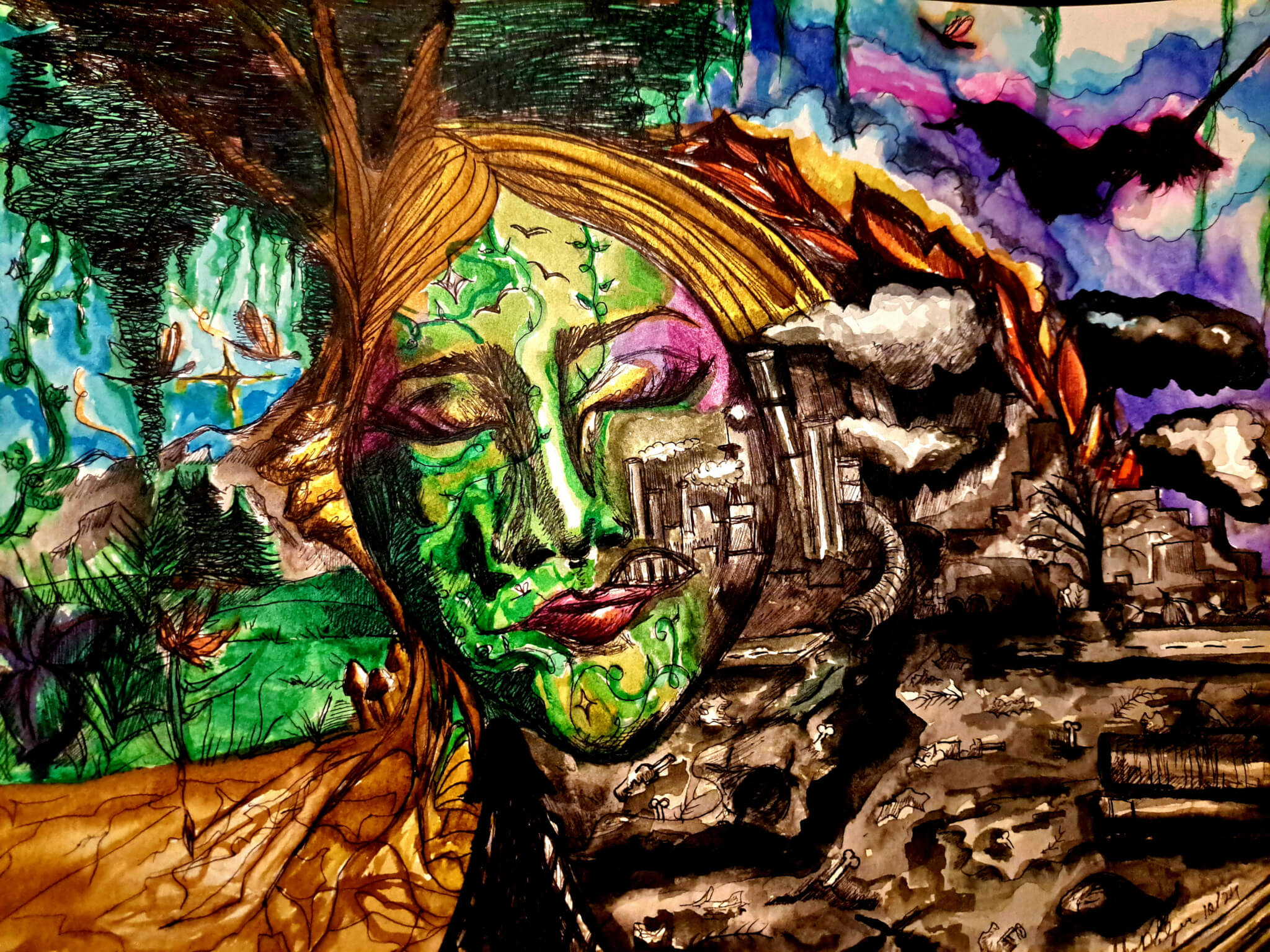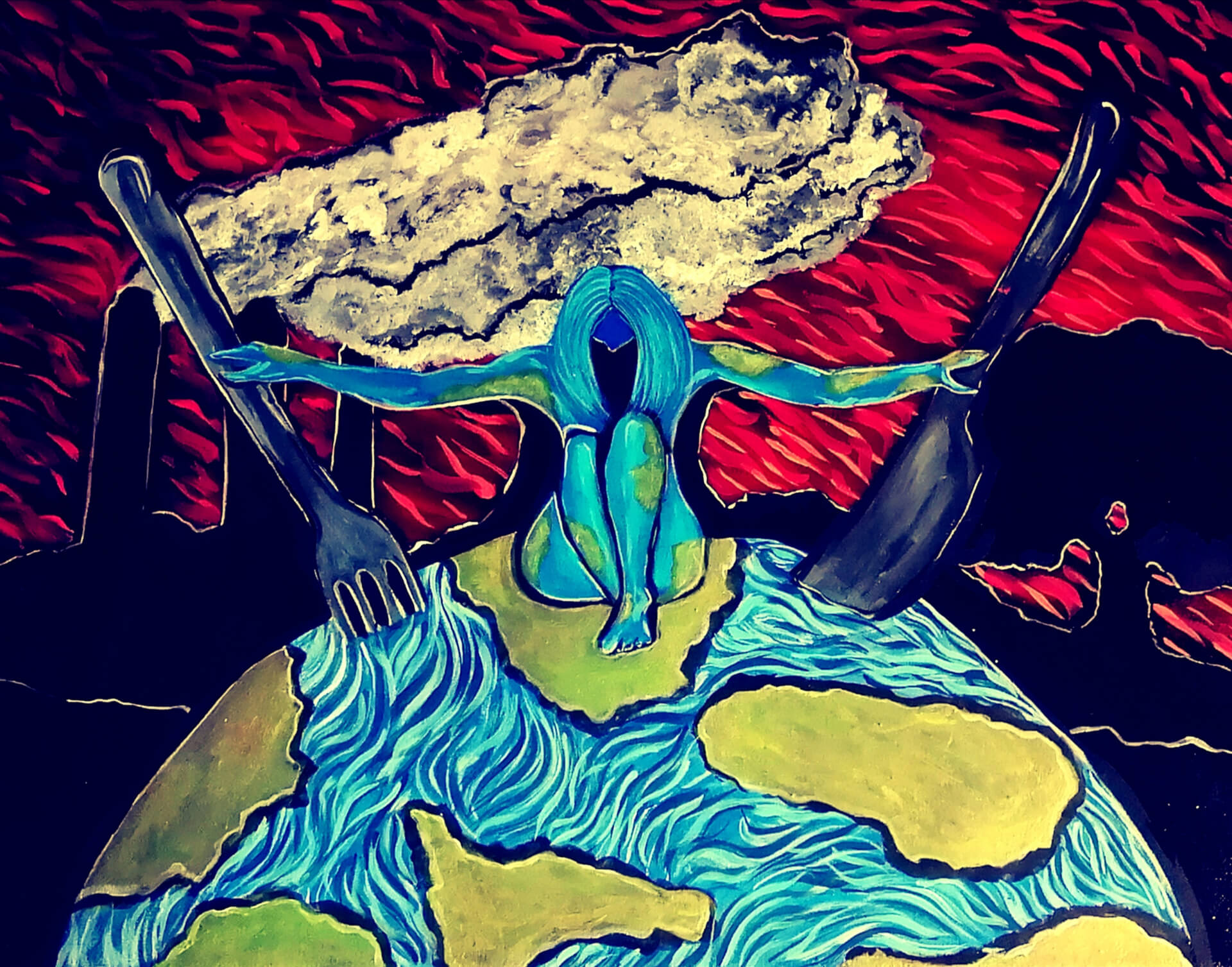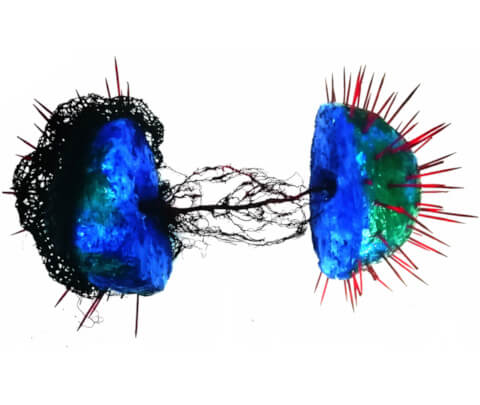"PlantGate" at the IPCC
Vegan Society of Canada News
May 17th 2022
Despite CO2 levels in the atmosphere continuing to rise, we no longer seem to be talking about the climate crisis. We have coined the term “PlantGate” upon reviewing the latest IPCC report, and we aim to bring climate change back to the forefront.
Since IPCC reports are incremental in nature, nothing in this new release should come as a surprise. As things become clearer, various probabilistic statements regarding outcomes are adjusted, sections expanded, clarified, or added.
The first interesting aspect in the new report is the refinement of the uncertainties regarding past emissions.
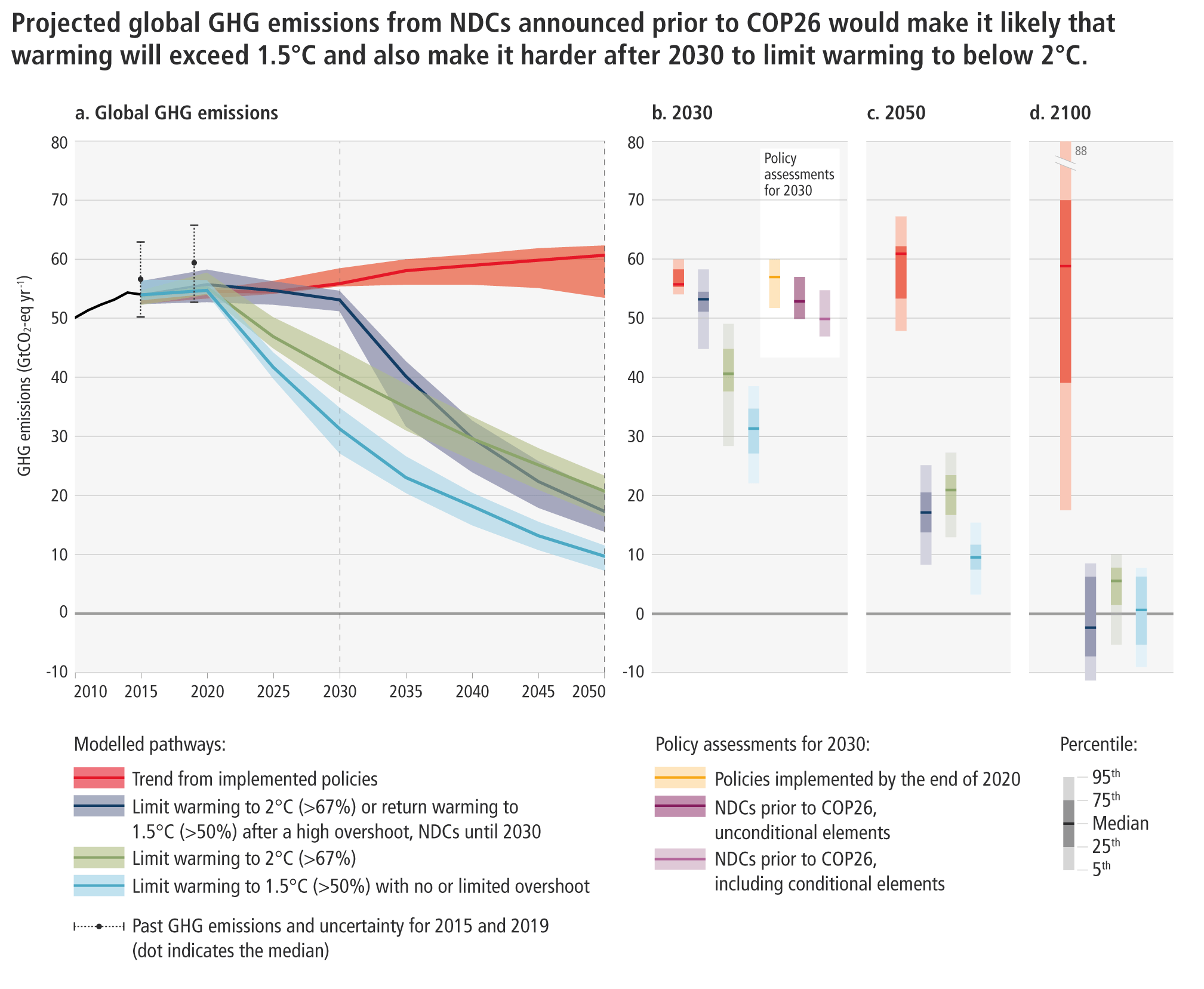
Looking around the web, we see many graphics on past global emissions, and they all have straight lines giving the illusion that past emissions are an exact number. The numbers produced in Canada are, at best, deceptive. There is a strong incentive for politicians to distort the truth, if not outright lie, and this is happening globally. Therefore, from a scientific standpoint, showing a straight line is inaccurate since perhaps the only thing we can be certain of is that the global number is wrong.
The latest report emphasizes the fact that there are many uncertainties about past emissions, as is the case for future emissions. This is crucial to understand since the more we produce the more we have to cut. Knowing exactly how much we produce is important but certainly not as vital as how much we must reduce or eliminate.
We have the concentration of CO2 in the atmosphere as a guiding light to give us insights into where we are going. While we might be lulled into a false sense of security by politicians and businesses, the planet is immune. No matter how clever the subterfuge, it has zero effect on the concentration of CO2 in the atmosphere. Unfortunately, we don’t yet have one formula to translate all the input variables, like fossil fuel usage and emissions, into a CO2 atmospheric concentration.
The next interesting graph and the source of the “PlantGate” incident at the IPCC, is the refined graph relating to demand-side mitigation.
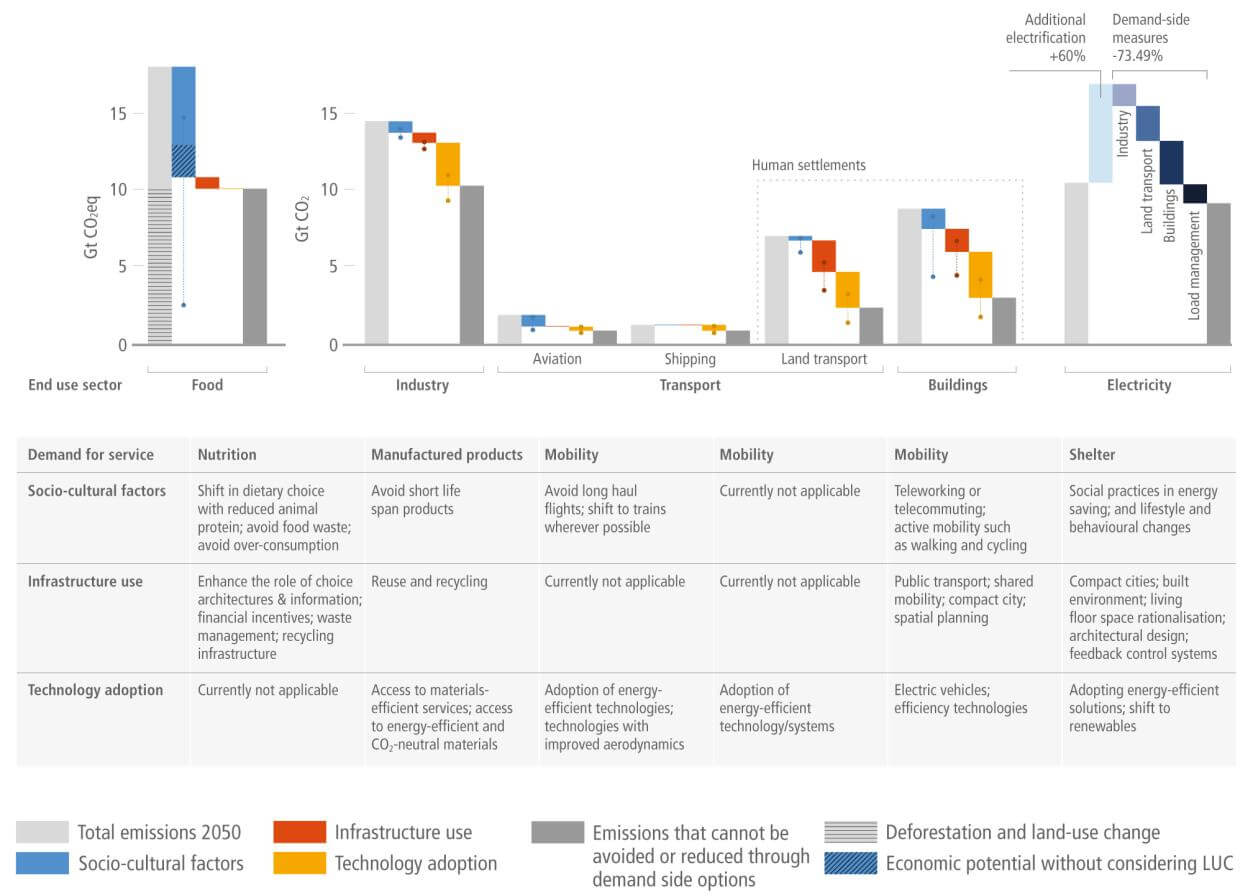
We made clear before that we do not share the view that voluntary human extinction is the only way to end animal exploitation or fix climate change. The IPCC does not discuss in detail where they draw the line, but it seems logical that their scenarios are within the realm of possibilities on a global scale, not only limited in technological terms but also in terms of our selfishness.
We see in the graph that the uncertainties regarding how and what we eat are large and mirror what we have seen in the research literature. However, it is nice to see the IPCC acknowledge this spectrum from somewhere around 2 GtCO2e up to about 15 GtCO2e.
It is interesting to note that this number does not represent only what we eat but how we eat. We have discussed in the past how molecular veganism is an emerging threat to our vision. Plants are not inherently better, and the IPCC reminds us that if we eat plants but overeat, or are stuck in consumerism, our carbon footprint could be higher than people who do not eat plants. The rate of obesity in North America is among the highest in the world; simply eating a healthy number of calories would not only make us healthier but also help lower our carbon footprint.
We have seen first-hand all the obstacles to getting better data. Animal agriculture is a multi-billion dollar industry; just like tobacco, lead, asbestos, and too many others, they will not go away quickly nor easily. They fiercely oppose anything that could remotely threaten their profit and existence.
The IPCC reports are the lowest form of agreed-upon consensus among all the countries. While it is science that underpins the full report, it is politics and self-interest of all respective countries that shape the final version of the summary, since politicians must approve it. Furthermore, the IPCC negotiations are quite opaque and are only allowed to be covered by one organization.
The “PlantGate” incident during negotiations between countries in the final summary report is a great example that obstacles to our vision do not only lie with corporations but also with corrupt governments acting outside what’s best for their citizens to further private interests.
The negotiations surrounding Figure 6 above are a great example of this. In the report of the negotiations, it is clear that too many countries are not interested in science but only in protecting private interests. Assuming nobody would read the full 2913-page report, they modified the text from the one presented above in Figure 2:
Shift in dietary choice with reduced animal protein; avoid food waste; avoid over-consumption.
From the summary of chapter 5:
The greatest “Shift” potential would come from switching to plant-based diets.
All of this changed to the following text:
Dietary shift (shifting to balanced, sustainable, healthy diets), avoidance of food waste and over-consumption.
Those are saying very different things. Most regrettably, many countries were hard at work protecting the billions of dollars of the animal agriculture lobby. Kenya, Argentina, South Africa, and Brazil argued to remove the term “plant-based diet” to be replaced with “balanced diets” while the Netherlands, Germany, Norway, Luxembourg, and New Zealand went for “sustainable, healthy diets” instead. Every other country was content to remain quiet; only Sweden came to defend the scientific integrity of the report to keep the original wording favoured by scientists.
The scientists specifically reminded politicians during negotiations that the science in this case is very clear, and the mitigation potential is a shift from animal to plant protein. Nevertheless, politicians ignored the scientists and corruption won the day. All the countries settled on the final text you see above, which is in conflict with science and their own full report as detailed in chapter 5 that remains mostly unaffected by politicians.
None of this was covered by mainstream news. It seems politicians were right to focus on the summary since nobody will read through the 2913 pages of the report, let alone the summary of the negotiations.
There are many ways to cut down on our emissions and we have covered many in our previous articles. We have often said it is a fallacy to believe politicians are leaders—they are simply a mirror of society. While it’s easy to point a finger at politicians, we must begin with our individual responsibilities.
Despite saying we love our children, we are, as a society, too selfish to make any meaningful change to help guarantee their future. Only once we change will we see politicians change.
